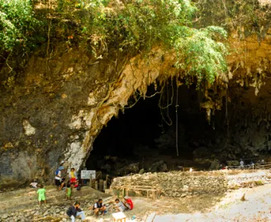Timelines for Human Evolution and Dispersals
Luminescence dating has been instrumental in constraining the age of archaeological and human skeletal remains. Thermoluminescence dating was applied originally to heated pottery and burnt flint, and optical dating was developed subsequently to estimate the depositional age of sun-bleached sediments associated with artefacts and fossils. These methods have helped establish numerical timelines for human evolution and dispersals over the last half million years, including the earliest evidence for modern humans in Africa, Asia and Australia, and the comings and goings of archaic humans in Eurasia and Indonesia. Here, we recount the major role that luminescence dating has played recently in enriching our understanding of global human history.
Timelines for Human Evolution and Dispersals Read More »


